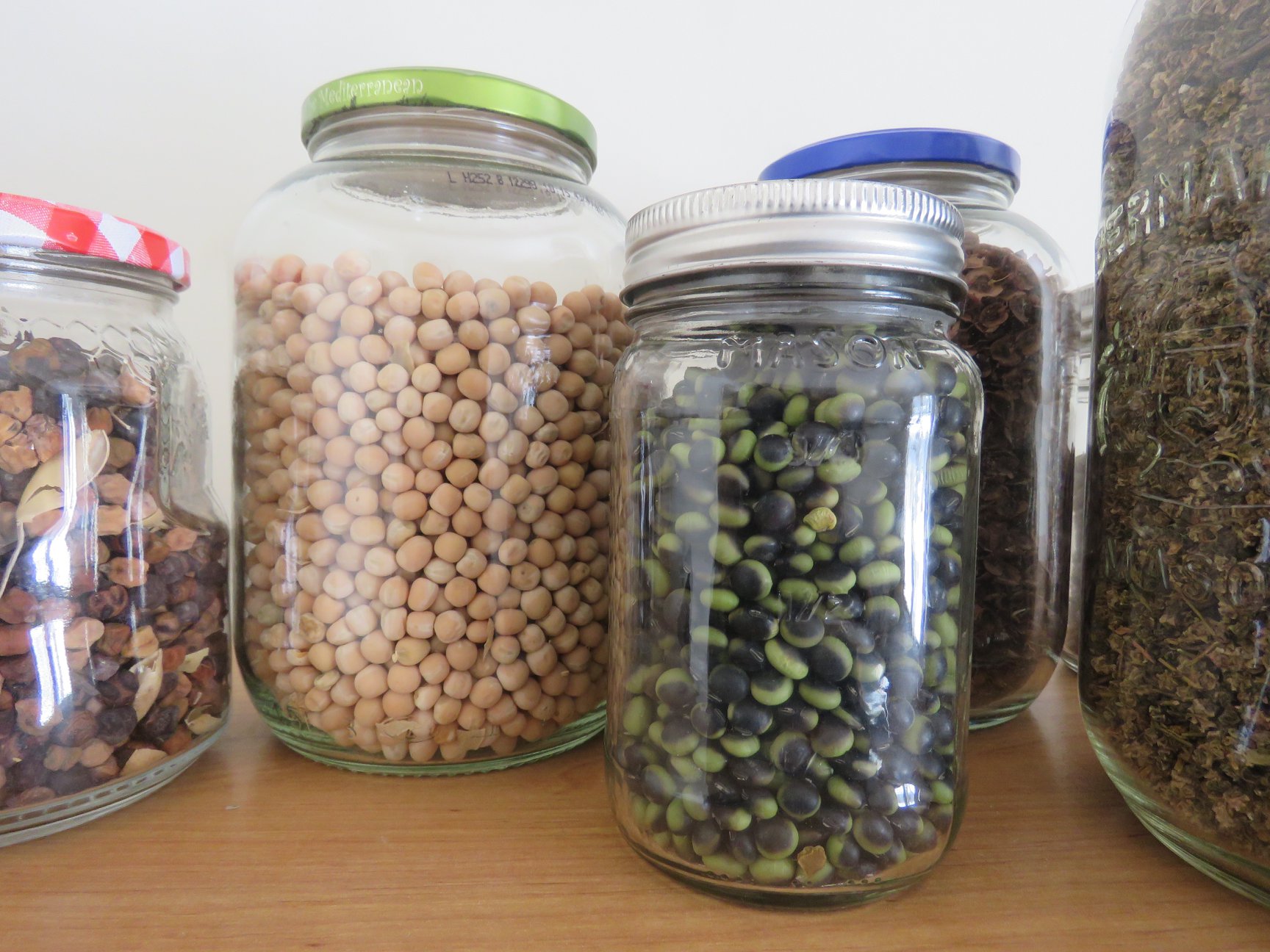
If you have either a big enough garden or just the inclination, you may have thought about growing for storage. This requires a shift in thinking toward not just food that is wholesome and delicious fresh but also those varieties that store well in a variety of ways. Besides canning and its close cousin pickling – which will not be covered in this post – I’ll be going over different ways that you can have your own fresh veg all year round.
A blanket statement about storing whole, unprocessed vegetables is to always treat your produce with care. Don’t toss potatoes into the wheelbarrow but place them. Avoid picking up pumpkins by the stems and snapping them off; cradle them.
Warm Storage
The simplest form of warm storage is harvesting, perhaps curing (that’s allowing the fruit to dry off and the skin to harden) and then placing on a counter in room temperature. Though no doubt there are more vegetables I haven’t tried, the following can be treated that way.
Winter Squash
Winter squash are the most straight forward example. I see varying instructions on curing but essentially put somewhere that’s not wet – perhaps in the sun – and let them dry off and let any nicks or cuts heal. Careful when you are handling them to not knock the stems off if you can as this might shorten storage time. I also find that squash store best if they are almost ripe or just ripe but not very ripe. If they have any ground rot type blemishes, you’ll want to process those ones or use them first. When I ran Aster Lane Edibles, we even had a public participatory breeding project on butternut squash that was designed to hold on a counter for up to 2 years! Try Waltham Butternut or Autumn Frost
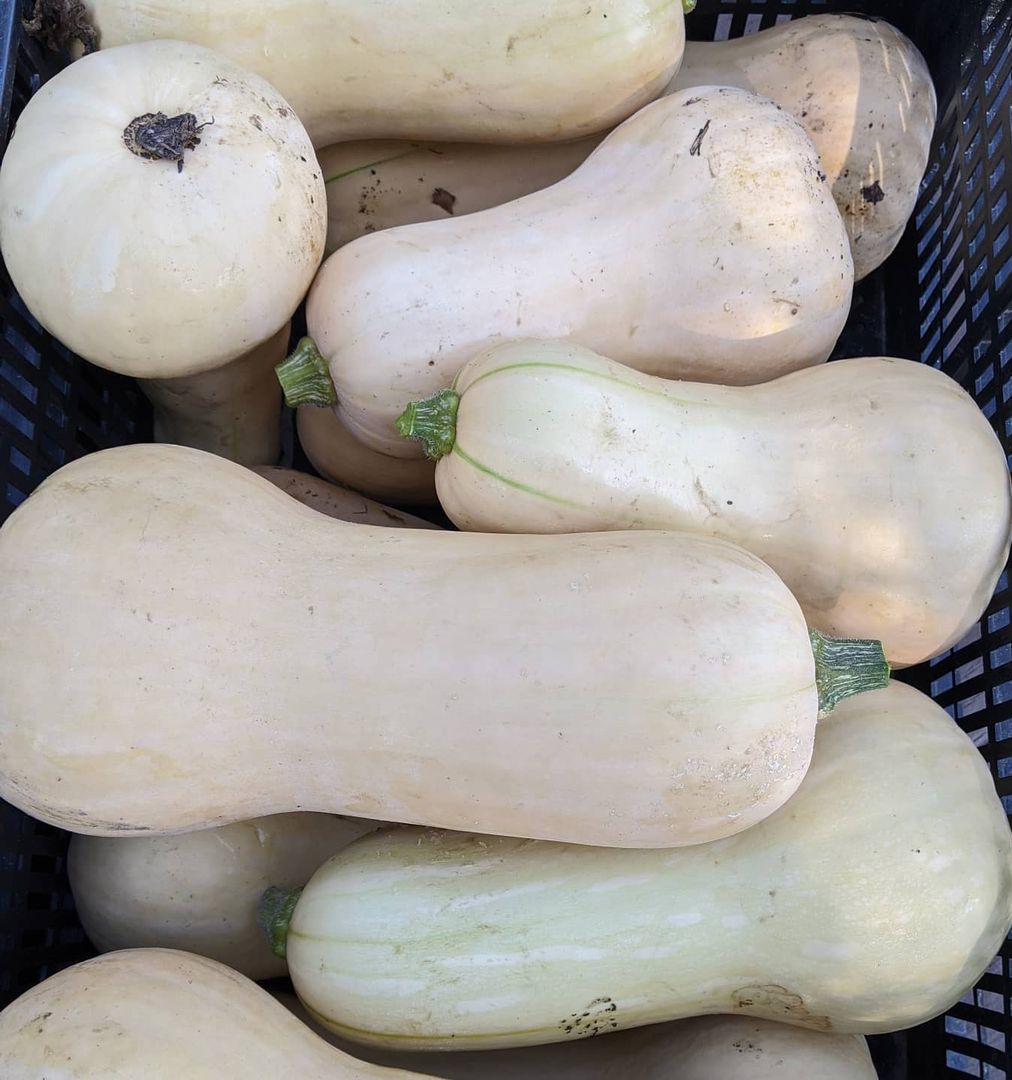
Summer Squash and other vining friends
Similar to winter squash, summer squash (even zucchini) that has been left to ripen on the vine, will store. This means that they are way past the stage you’d normally eat them at, maybe the size of a baseball bat, have possibly differently textured flesh and ripe seeds as well as harder skin. They will often last months once they are at this stage. I grew a white patty pan cross that I would intentionally use as a winter storage ‘summer’ squash which would easily last a year. It would have to be peeled and the seeds removed but it’s texture was quite good. I’ve also often stored naked seeded pumpkins for 4 or so months before taking out the seeds.
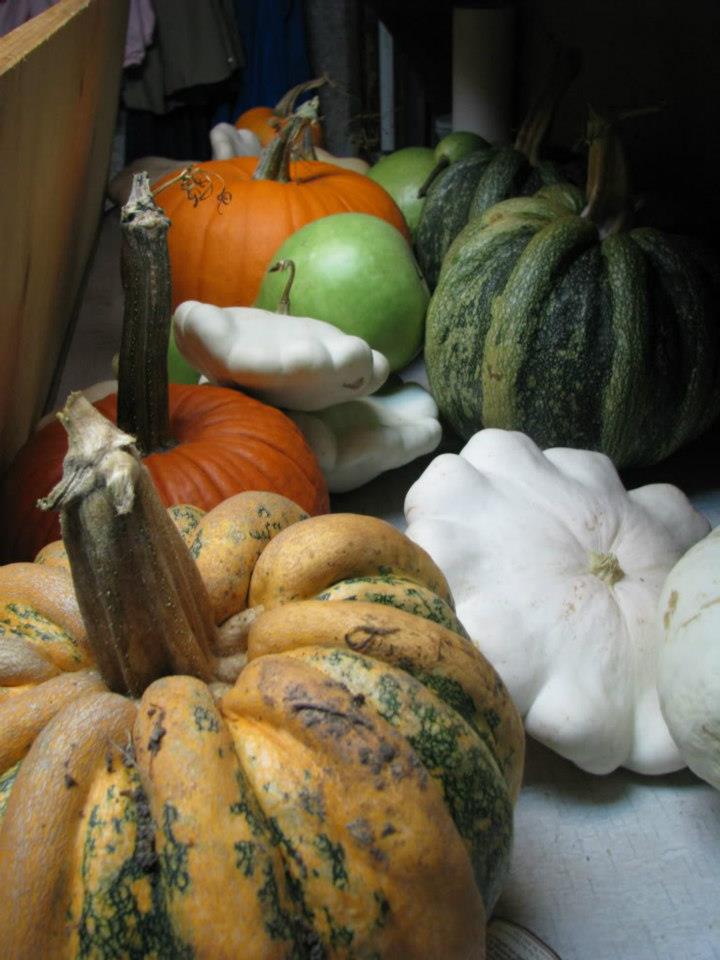
I’ve heard tales of watermelons and some later ripening melons storing for a few months as well after harvest. There are probably varieties developed with this trait (I recall Blacktail Mountain Watermelon being described as a keeper but can’t find the reference now) but it may also be partly because they were picked ‘near’ ripe. On the other hand, citron is a storage type that lasts years. These are varietals of ‘watermelon’ that are grown more for their dense rind like flesh that is used to make preserves.
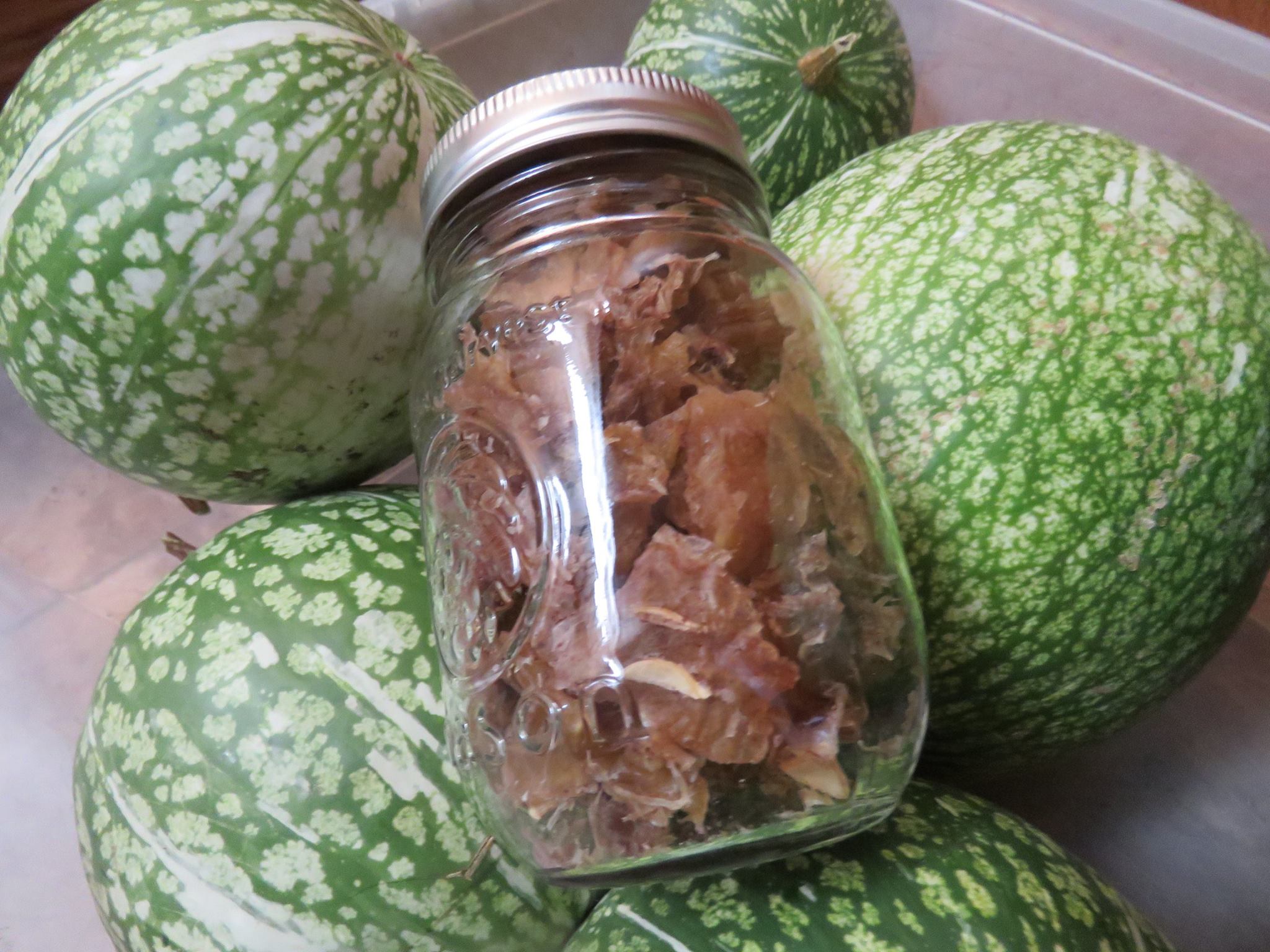
I can think of a few other odd vining things that I’ve had sit and slowly ripen on my counter for months while retaining some level of edibility so its something to explore.
Tomatoes, Tomatillos and Ground Cherries
These have a shorter shelf life but I’ve found that when tomatillos and/or ground cherries were kept in their husks (so not like the picture below), unblemished fruits *can* hold on the counter for weeks, sometimes months. Underripe tomatoes will also slowly ripen in room temperature on the counter. Some varieties are even selected to ripen later or more slowly inside like long keeper tomato.
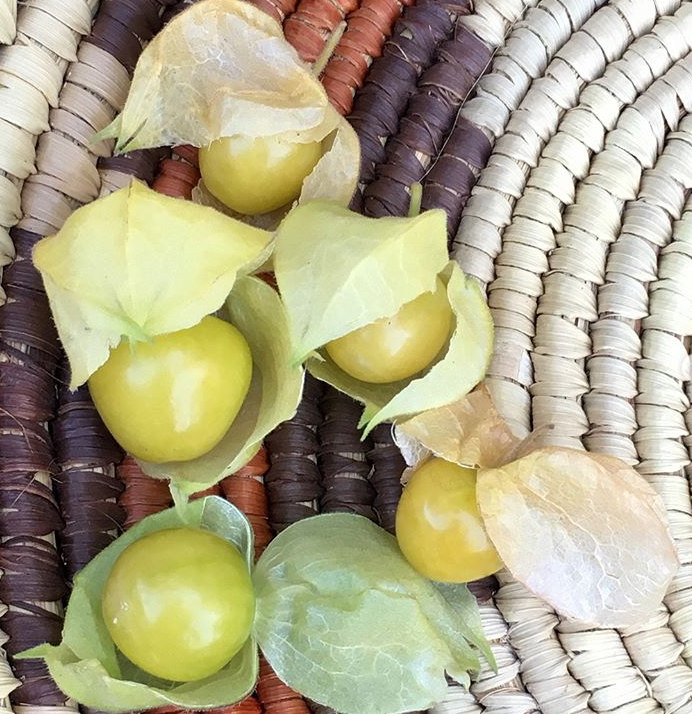
Sweet Potatoes
Probably true of many tropical tubers, but my experience is specific to sweet potatoes, if they are properly cured, they prefer to store warm. We used to keep our sweets in a very large chest near our wood stove. Keep in mind that sweet potato is Ipomaea batatas rather than potato that is Solanum tuberosa. I repeat this often because the common name really only refers to commonality of culinary preparation – baked, fried, stewed – rather than growing or storing similarity. Sweet potatoes are grown from little plants snapped off of the mother tubers in very warm soil. Though potatoes aren’t fans of cold, sweet potatoes are completely intolerant. To cure them, you must have them at high heat and humidity for up to a week (think butterfly house). I pack them in paper bags and put them in a small bathroom with a space heater. Their skins thicken, healing any cuts. Cured this way, they can store for years. I have even grown new sweet potato from slips off 2 year old tubers.
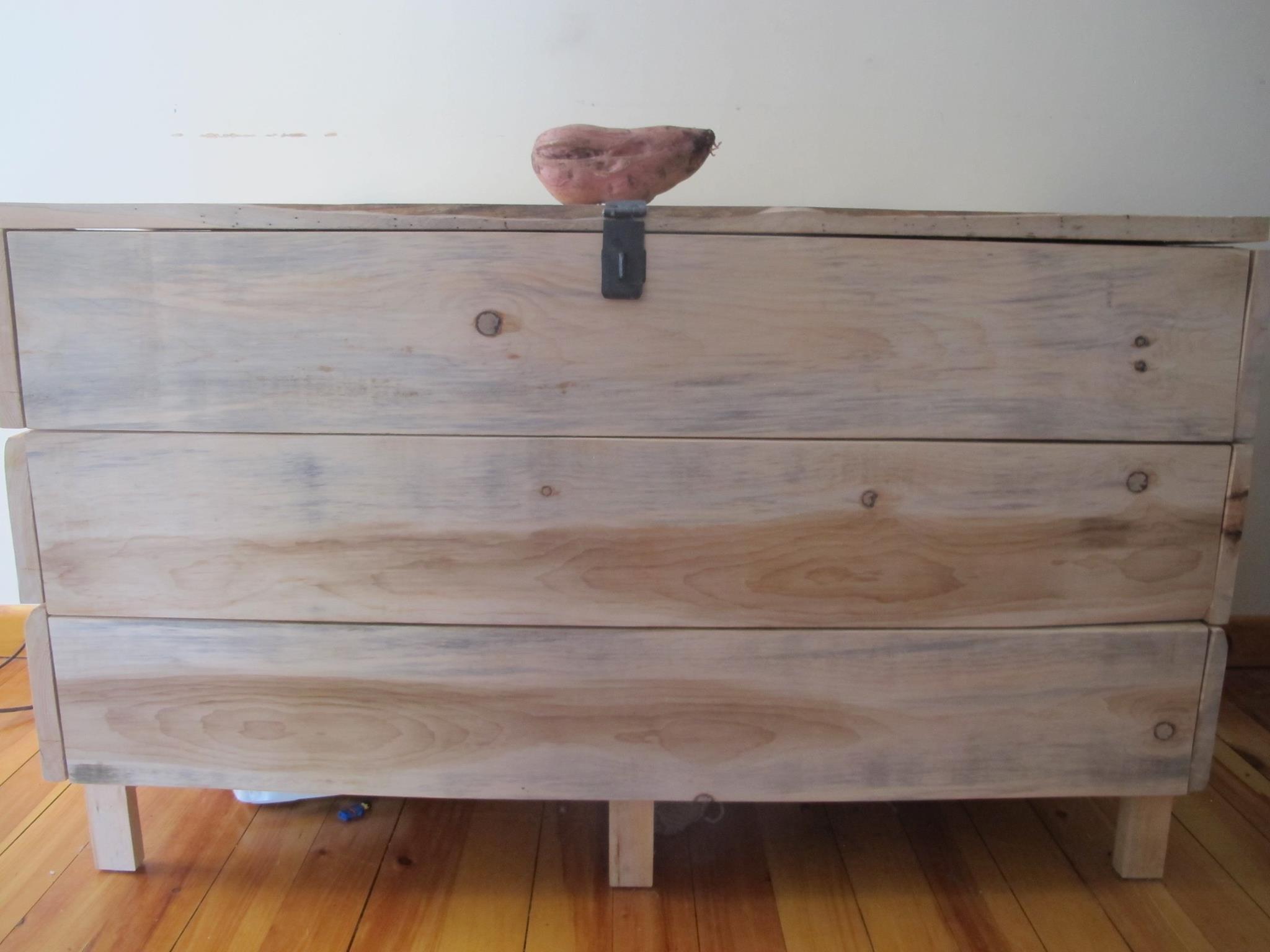
Garlic and Onions
Yes, they can be put in cool, cellar storage but most people I know, who only have a small amount, typically store in their kitchen. Warm storage is best for unblemished produce with frequent inspections for disease or sprouting. If you don’t have the best quality produce then you can process in some way (see drying, freezing, other). Some onions have better storage quality than others like Dakota Tears and Red Geneva. That said, garlic and onions are typically cured then stored well in cool, dry conditions.
There’s something quite cheery about a kitchen with a braid of garlic, rista of dried chillies and sprigs of herbs.
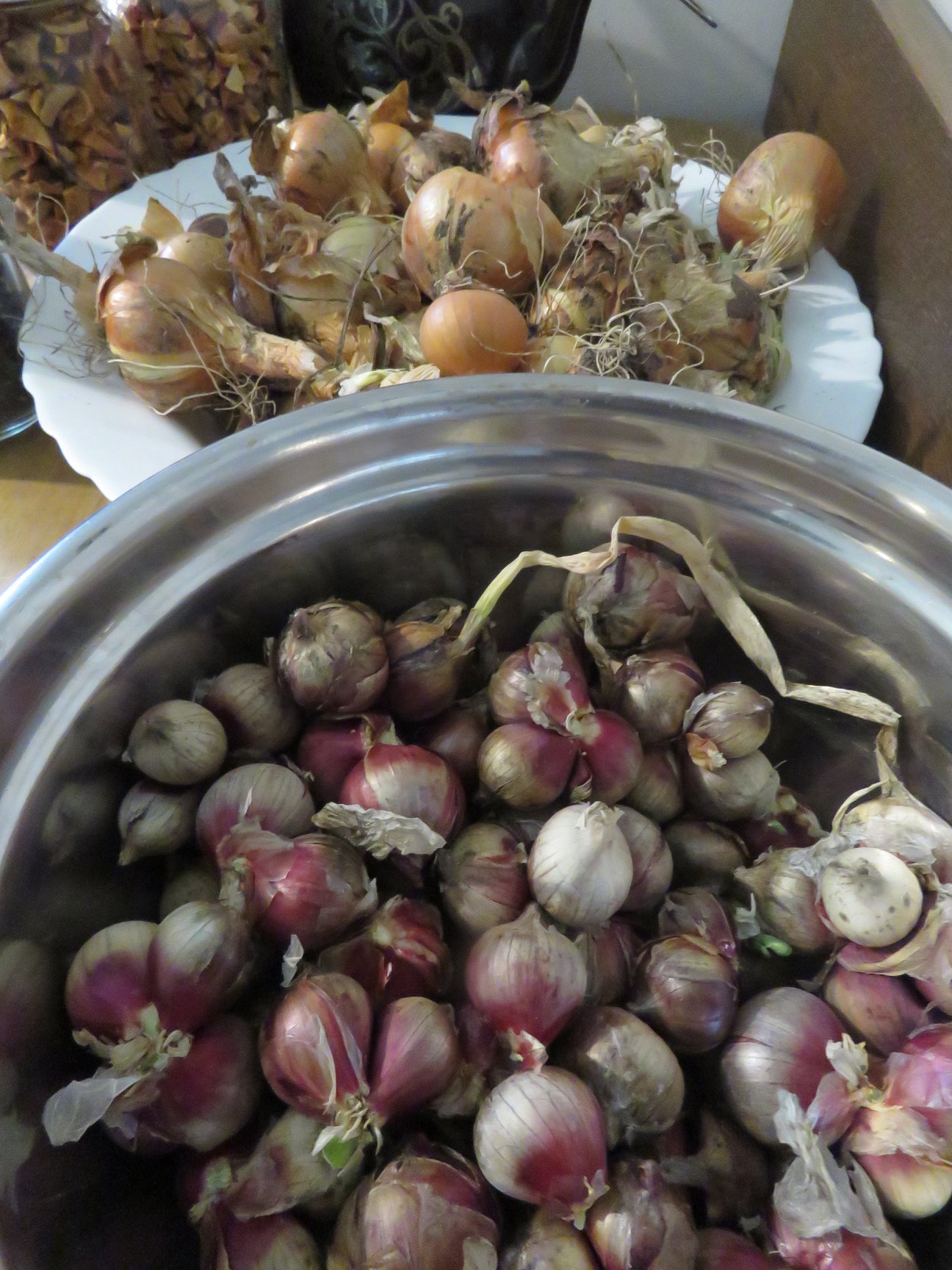
Seeds and Things
Legumes
Dry legumes of ALL sorts have been grown and used all over the world. In the Ottawa area, gardeners commonly grow dry beans and peas but it’s pretty easy to grow soy too. I also grow a variety of chickpea that though not as high yielding is very gratifying. Others have had success with lentils, fava beans, lima beans and more. Though there are some subtle differences between growing for food and growing for seed, they are very compatible. The biggest difference is you usually need a lot more for food than you do for seed!
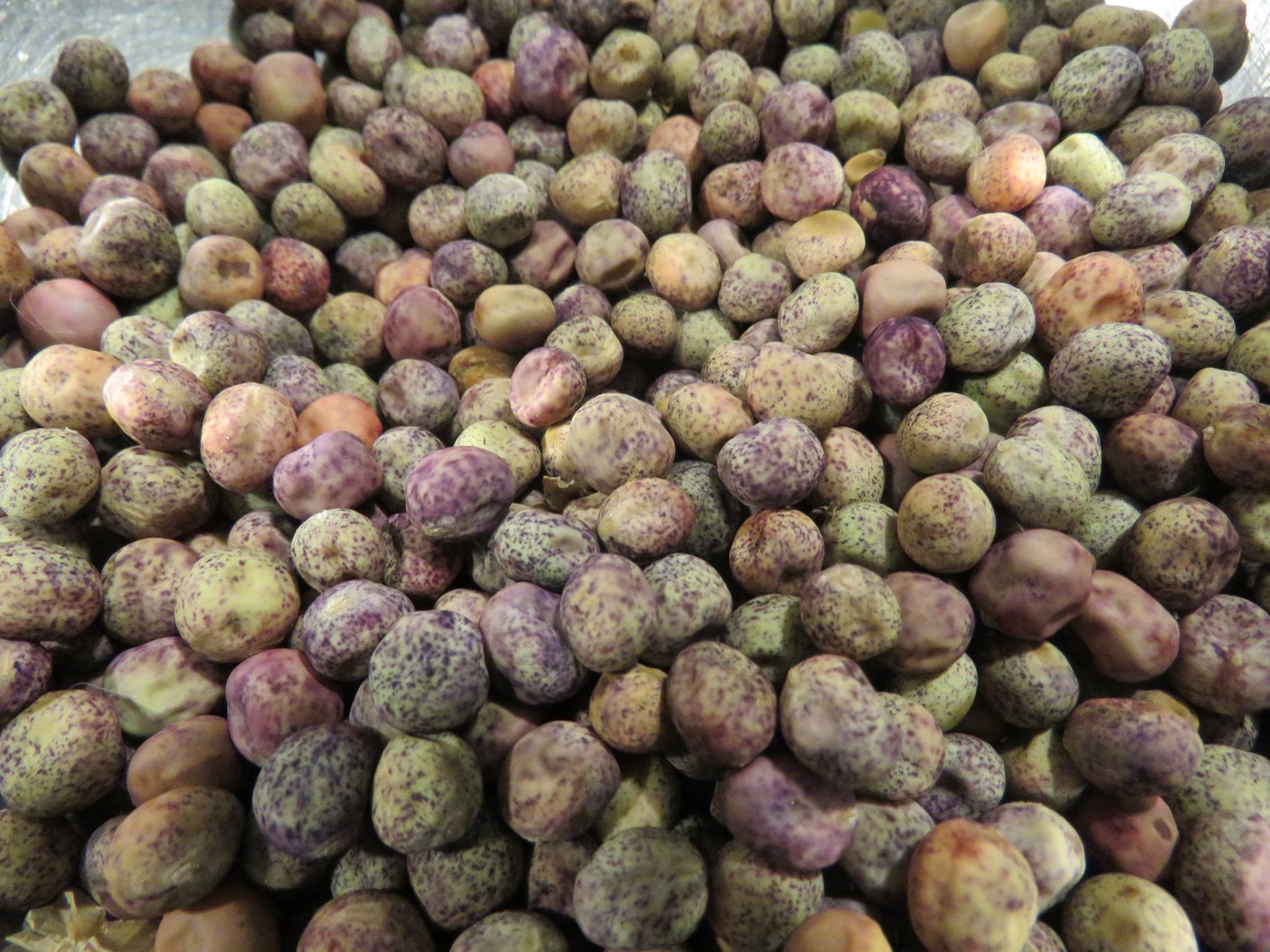
Whether you prefer vining or bush varieties is dependent on your growing situation but bush types (in my experience) typically dry down more or less all at once. Make sure they are thoroughly dry before storage and if you aren’t sure? Dry some more. The test I was taught was that if you hit them with a hammer, they shatter when fully dry. There are so many beautiful dry bean varieties such as Vermont Cranberry and Speckled Algonquin Bean.
Peanuts also have been grown successfully in the Ottawa area though I find the creatures enjoy them as much as I do and the yields were less than some other plants that I grew instead.
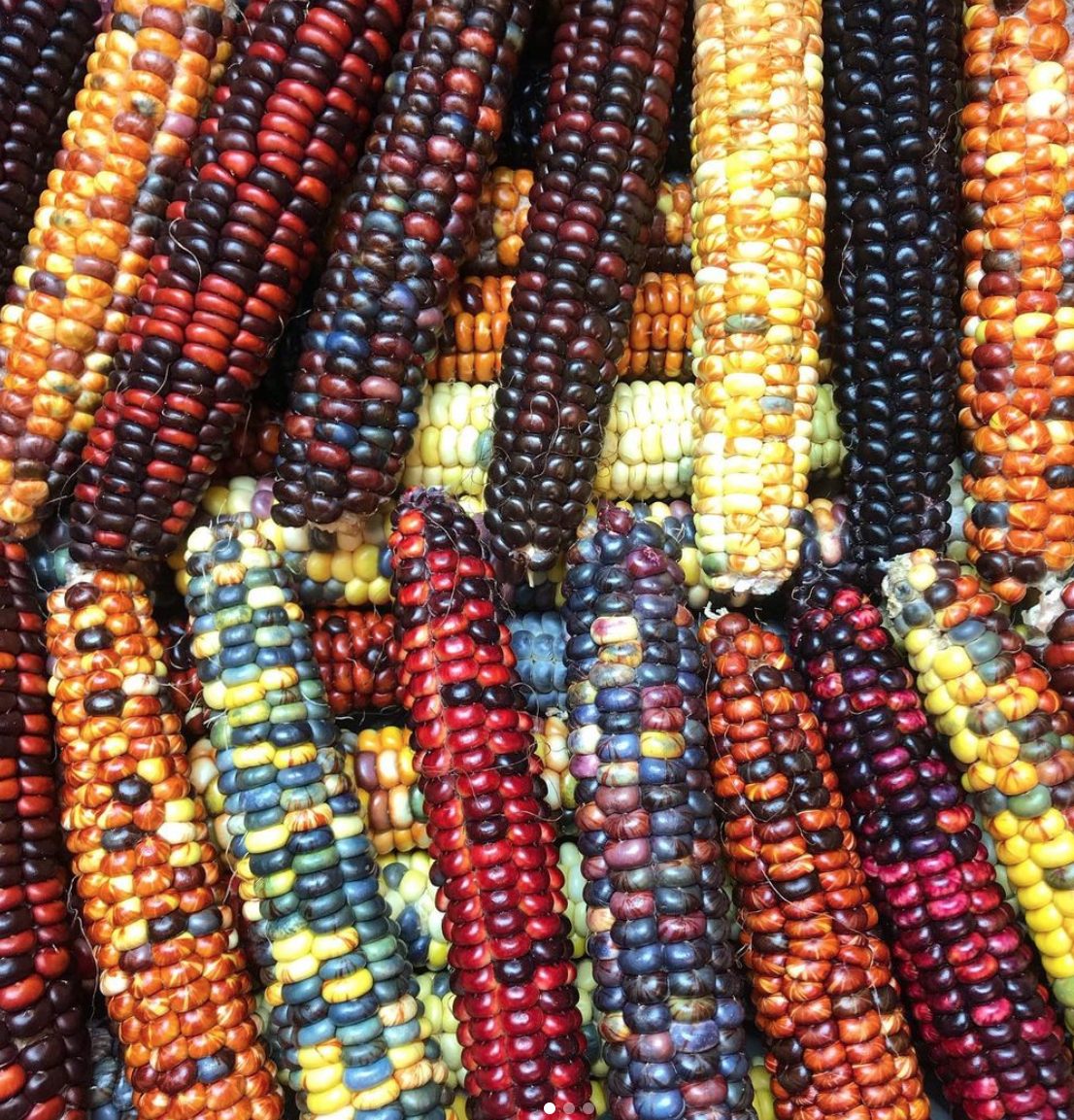
Grains and Other Seeds
In fact, all sorts of seeds can be properly dried and put in jars for winter storage including:
- Herbs like parsley, fennel, mustard (really any kale, asian green will produce ‘mustard’ seed for you)
- Pumpkin seeds are delicious!
- Psuedocereals like amaranth. I’ve grown quinoa but not as successfully as some
- Grains like oats, rye, wheat, millet. Easy enough to grow though requires room for any quantity. Pretty easy to store in my experience but often hard to thresh and process so you it is a good idea to be willing to learn some techniques and buy/make some equipment.
- Corn: popcorn (strawberry variety is adorable) is straight forward but if you are going to process other corn, you may need to look into traditional techniques like nixtamalization.
- Nuts like black walnut abound in our area. They are messy and hard to process but store really well (in my experience) in their shells for at least up to 2 years. You may also be lucky enough to get ahold of butternut, heart nut, hickory, or hazelnuts (if you can beat the critters to them)
- Chufa (tigernut) is a sedge tuber that stores well in paper bags at room temperature and grows very well in the Ottawa area. Tastes like a cross between almond and coconut. It makes fine baked goods and an interesting, tasty polenta and is also the main ingredient the delicious drink Spanish Horchata.
Many can also be sprouted in the winter as well for fresh, baby greens.
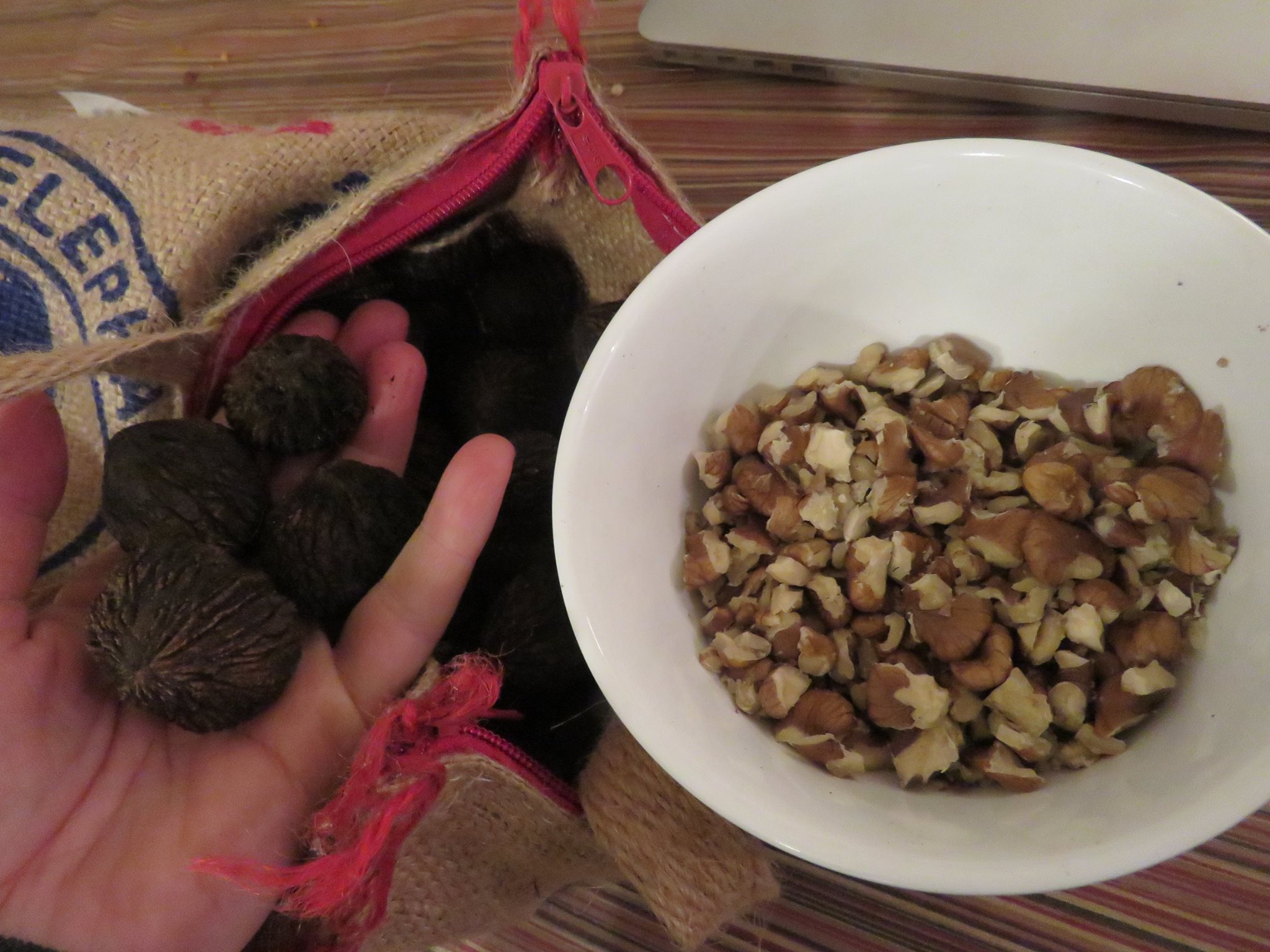
Cool to Cold Storage
Let’s start off with what this means. If a vegetable will hold longer in the fridge, or better yet, in the not ice-block frozen ground, then it is a candidate for cool to cold storage. I mention cool storage as some cellar alternatives don’t get as close to the fridge like conditions usually called for.
When you think of the old fashioned cellar, you are probably thinking of something below ground with dirt floors and shelves of baskets overflowing with potatoes and apples. I didn’t store that way. First off because organic apples with their nicks and freckles didn’t store long and secondly because apples can hasten the ripening of other fruit. Instead the apples were mostly made into cider, frozen, canned or dried though we did have a basket in the garage of the nicest ones.
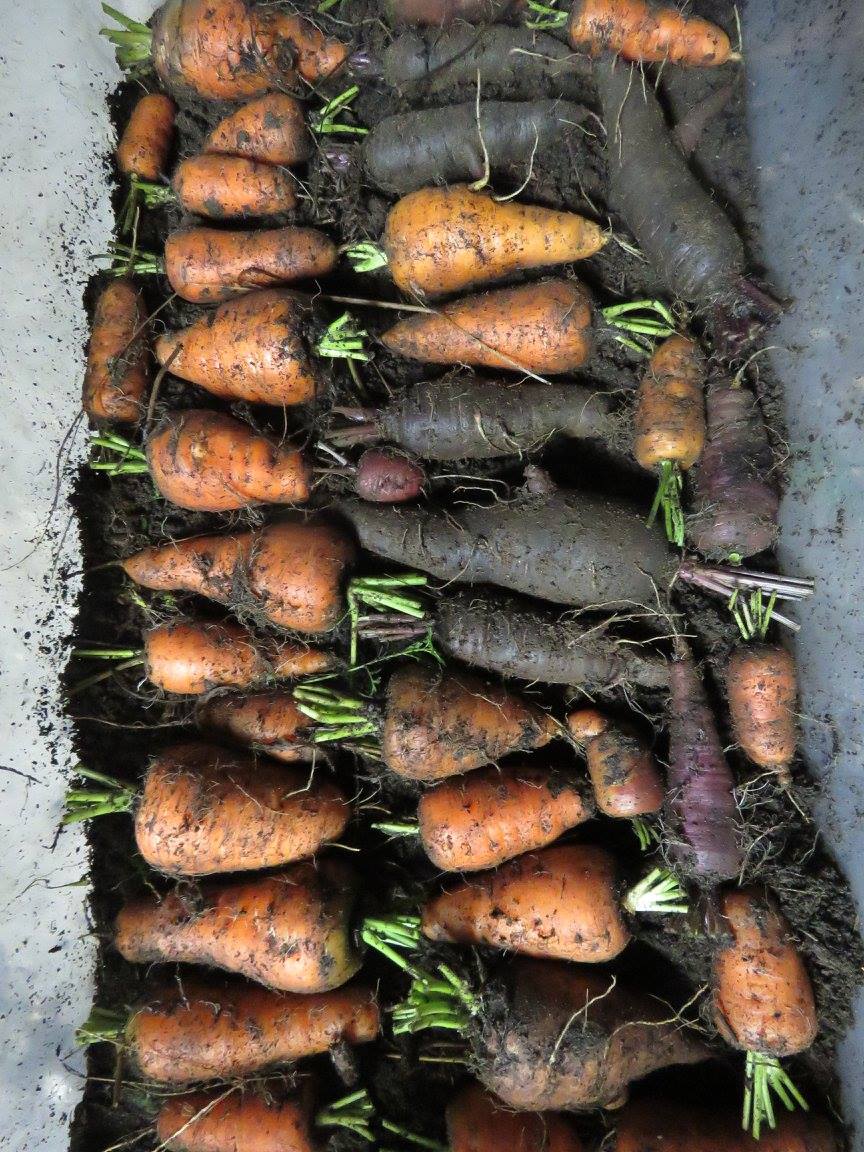
A proper cellar is cold but not freezing and damp without dripping. In these conditions root vegetables will last for a long time. Most small lot gardeners I know have never had a cellar. They may have a cold room under the front stairs or a front entrance with double closing doors that stays around 10C or a particularly warm-in-the-winter garage. These conditions will actually work to do some storage. You’ll want to pack your roots in shallow containers with wet sand and check to make sure they are staying damp (not soggy) and cool. Also check for sprouting because in these warmer conditions, that’ll happen more quickly. And remove anything that is starting to rot.
If you are feeling ambitious, there are various instructions on how to build things like a basement corner cellar or one using an old chest freezer in the garage. Heck, for storing special tubers that I used for my projects, I had a bar fridge. It was also great for stratifying (giving them cold treatment) seeds, and holding fruit tree scions for grafting. In fact, you can use a fridge to store small amounts of things in a plastic freezer bag. I seal mine though you’ll read perforated. Instead I check my bags frequently and shake them around to prevent rotting. Length of time things will ‘hold’ varies.
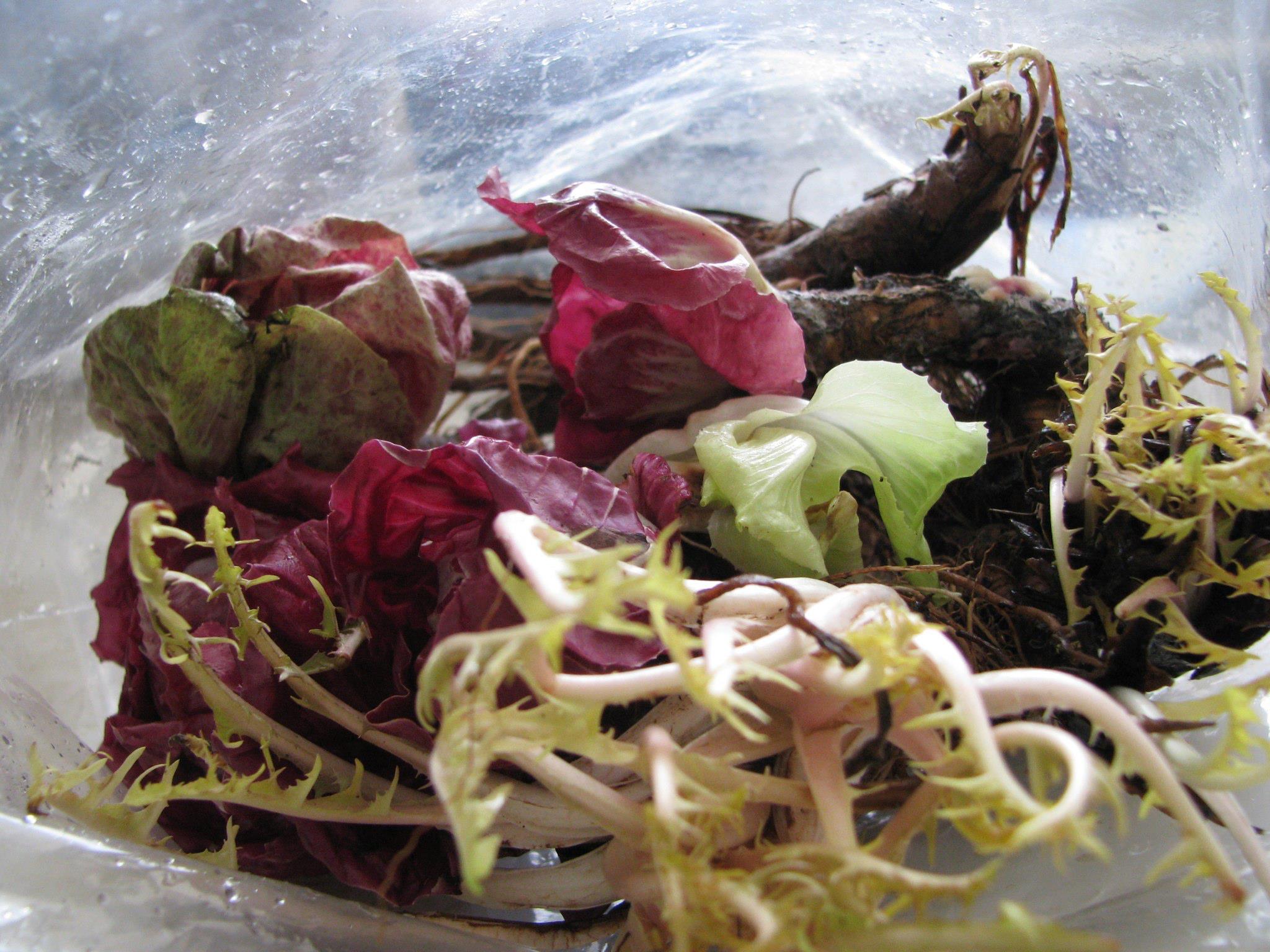
If you have an outdoor space, that you can keep free of snow like a little greenhouse, you can also use a clamp in the Ottawa area. A clamp is like an insulated outdoor pit/mound that you store root crops in. My version was to dig a 3-4 foot trench in my polytunnel, line it with sawdust, layer regular potatoes, carrots, beets, other roots I wanted to store like Beta maritima (sea beet!), cover with some more sawdust, repeat then cover with sandy dirt followed by plastic bags filled with fall leaves and finally weighted down vapour plastic. You can find various ‘recipes’ for how to fill and cover. When I wanted to use some potatoes or something, I’d lift the vapour plastic, move the garbage bags, lift the straw and unearth some. I used a modified technique to hold cabbage stems for replanting the next year.
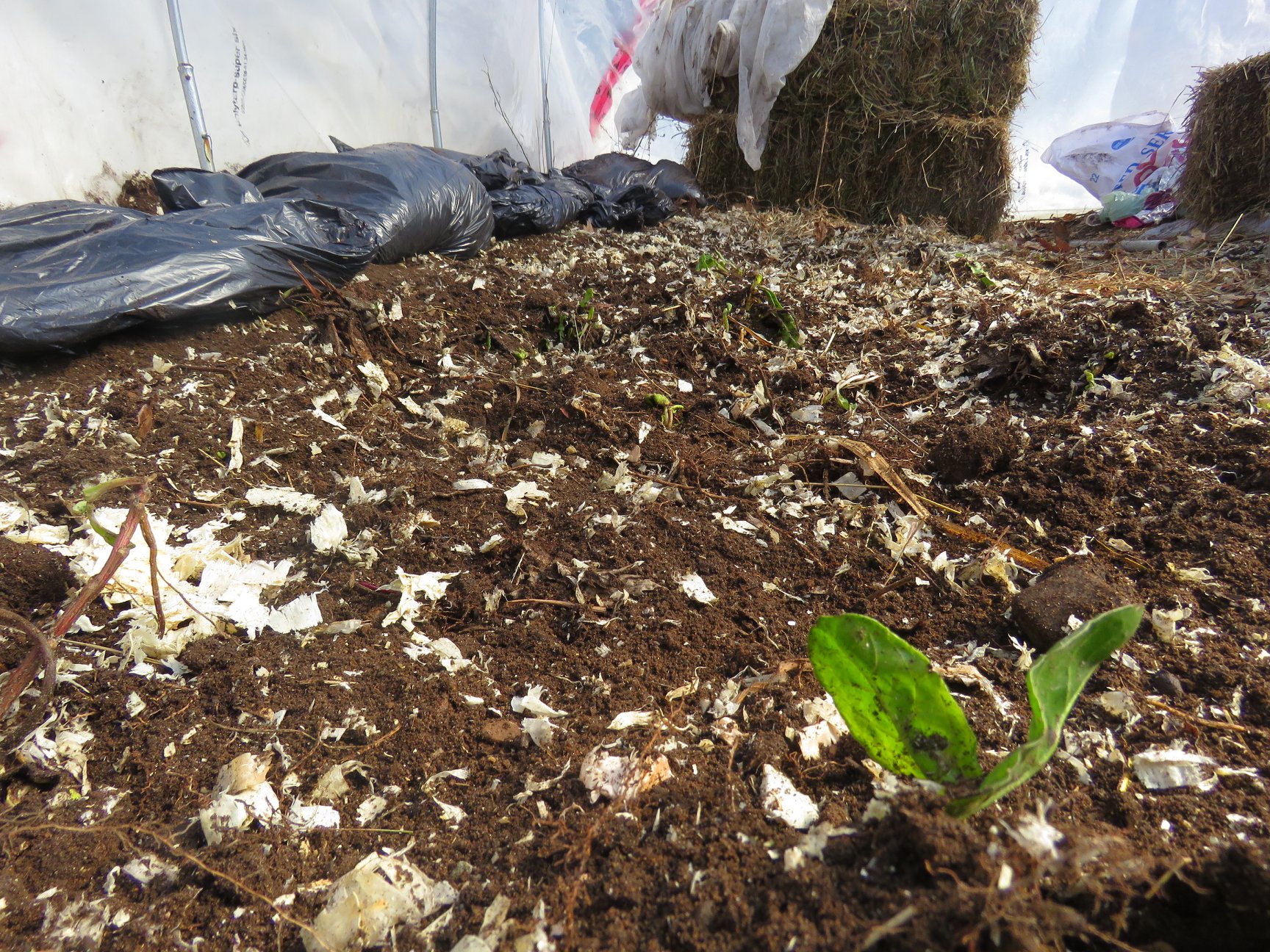
In fact, if you are *just* trying to save somewhat delicate roots for seed saving, you can do a version of the above (just make sure it’s not in an area that gets flooded) and let the snow finish the insulation. Dig as soon as the ground thaws in spring.
In a Pot
Some plants can be potted up and stored in cool conditions for later like leeks, kholrabi, Brussels sprouts and celery. Or you can pot up things whose sprouts you like such as Swiss chard and chicory. Cutting these latter ones back and then letting them sprout again when you bring the pot into a warmer spot. If it has good sized storage roots and will grow again if you cut it down, try this technique. When it’s done in the dark, it’s called forcing and the result is paler and milder in flavour.
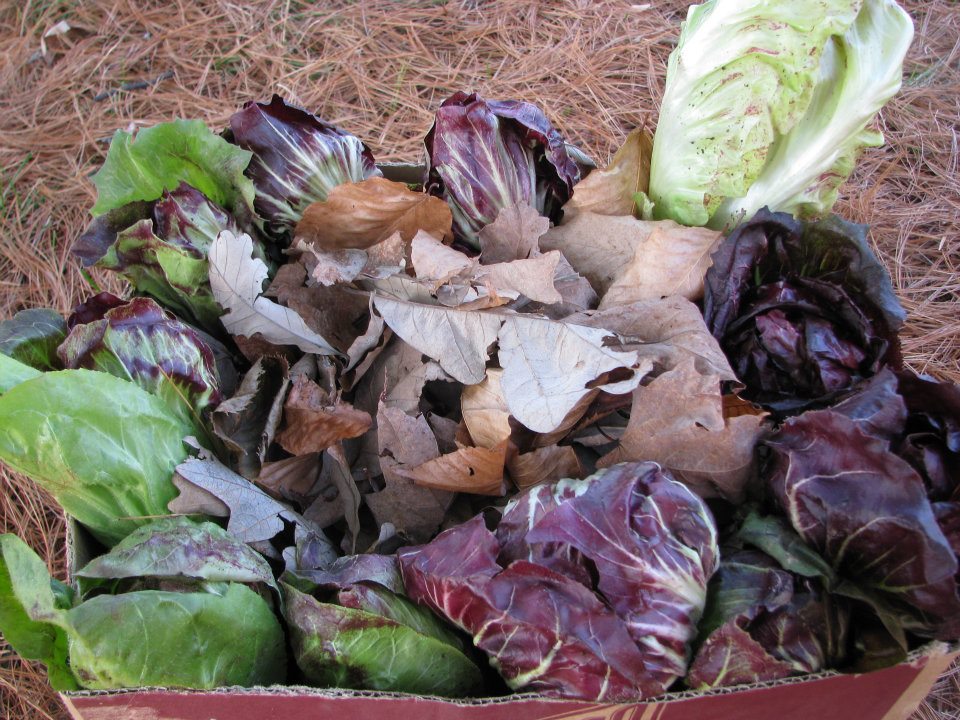
Layered in a container
Things that I’ve successfully held in sand/sawdust/dirt storage are:
- potatoes
- carrots
- beets
- parsnips
- rutabagas
- horseradish
- turnips
- parsley root
- celeriac
- salsify
- scorzonera
- burdock
- jerusalem artichokes
- yacon
- skirret
- winter radish
- I’m probably forgetting something…
To do this, find a shallow container and place a layer of sand then a layer of roots, then a layer of sand (some use sawdust and I note that I’ve been pretty creative in the past with what I’ve used…). Thicker rooted varietals such as Oxheart Carrots will work better as they have less surface area to volume so hold their moisture longer.
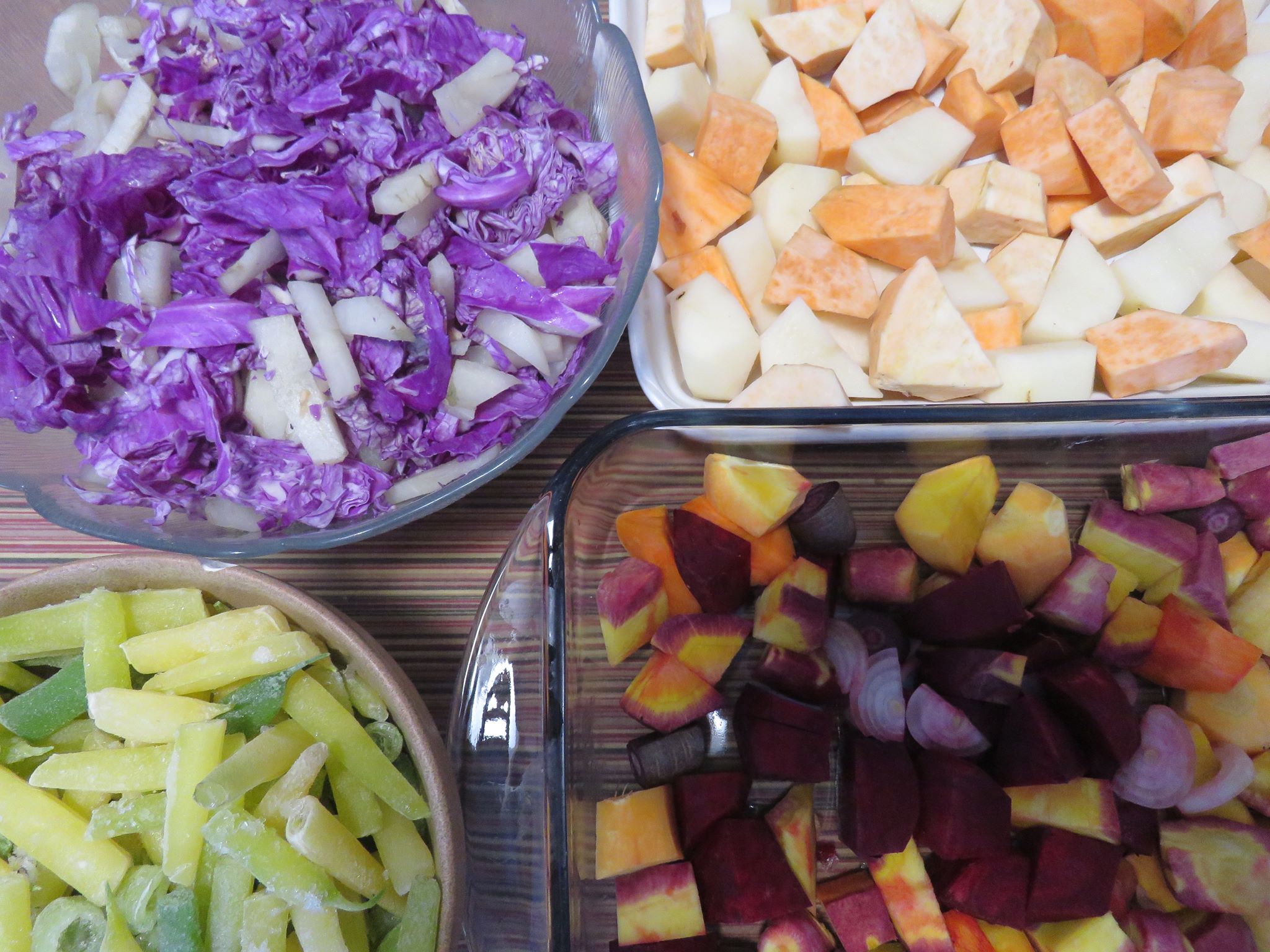
Cabbage
I have always stored cabbage heads in cool rooms (they store for ages in the fridge). Even if cut from their roots, happy heads will often root at the stem or from side shoots. They do not last forever and ever. We’d usually eat the last one around Christmas. The rest were shredded and dried, lactofermented or frozen. Kalibos Red has good storage quality.
Drying
Outside of natural drying down of seeds, this refers to removing the moisture from wet vegetables for longer storage. I do this with all sorts of fruits and vegetables. In fact, pretty much anything that I can’t or don’t want to store in the fridge, freeze, or can. It’s a great technique for vegetables that won’t hold or that are blemished and therefore are likely to rot. Here are some examples:
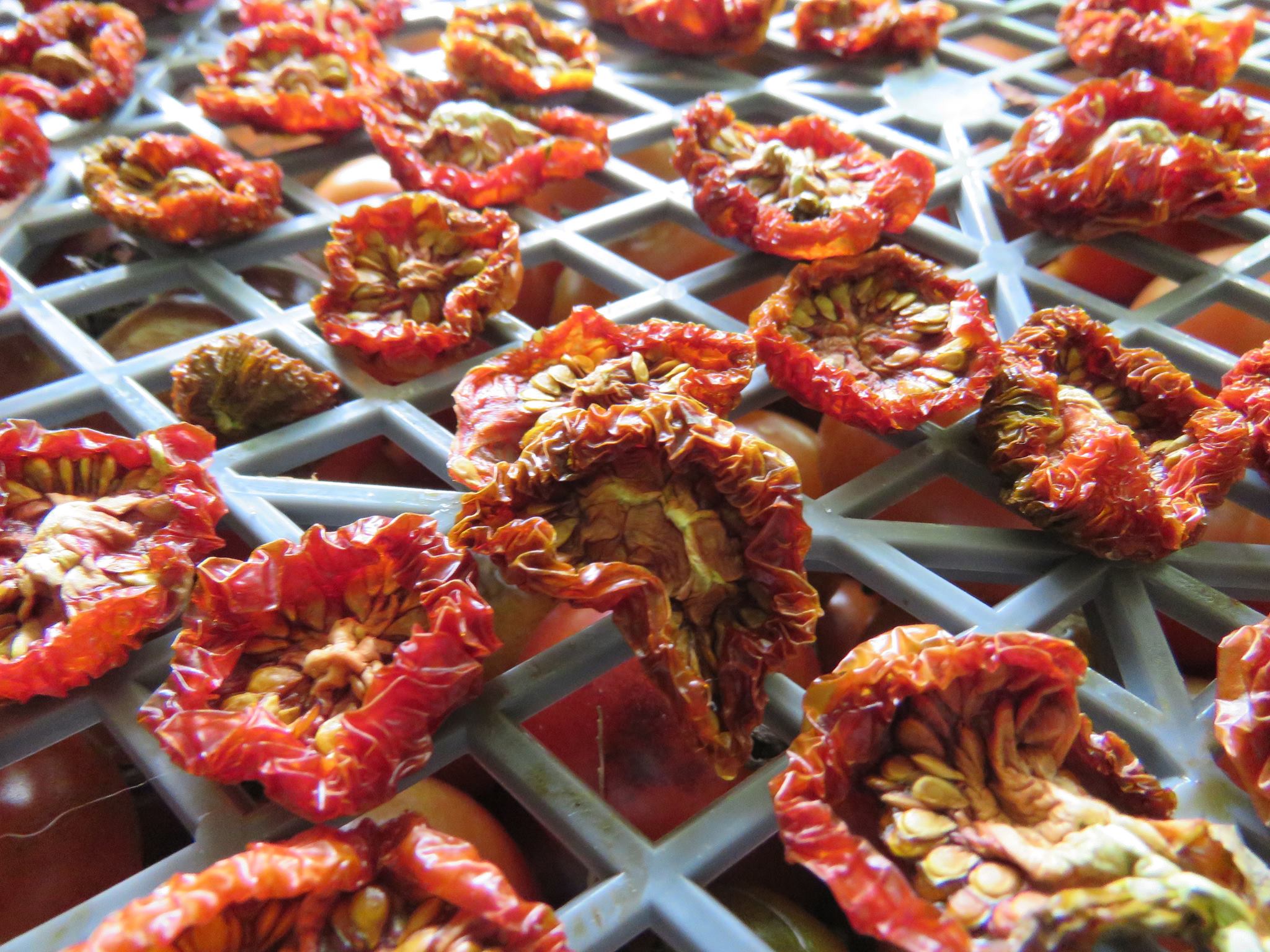
- Fruits like: strawberries, raspberries, apples, plums, cherries
- Immature cucurbits like zucchinis, pumpkins that didn’t fully ripen (I like immature dried maximas). Slice then dry.
- Peppers especially thin walled like Cayenne
- Tomatoes especially those that you can slice in half and dry. Also a good option for tomatillos or eggplant cut into slices. “Fig” tomato is known for drying.
- Mushrooms like morels
- Herbs: parsley, mint, lovage, thyme, sage, rosemary, lemon balm, chamomile
- Onions: garlic, onions like, chives especially those that were damaged in some way. I dried a lot of green onions.
- Greens: kale, Swiss chard, amaranth, spinach, dandelion, lamb’s quarters. I like to dry then crumble or powder and add to stews, curries, baking and more
- Cabbage: slice and dry
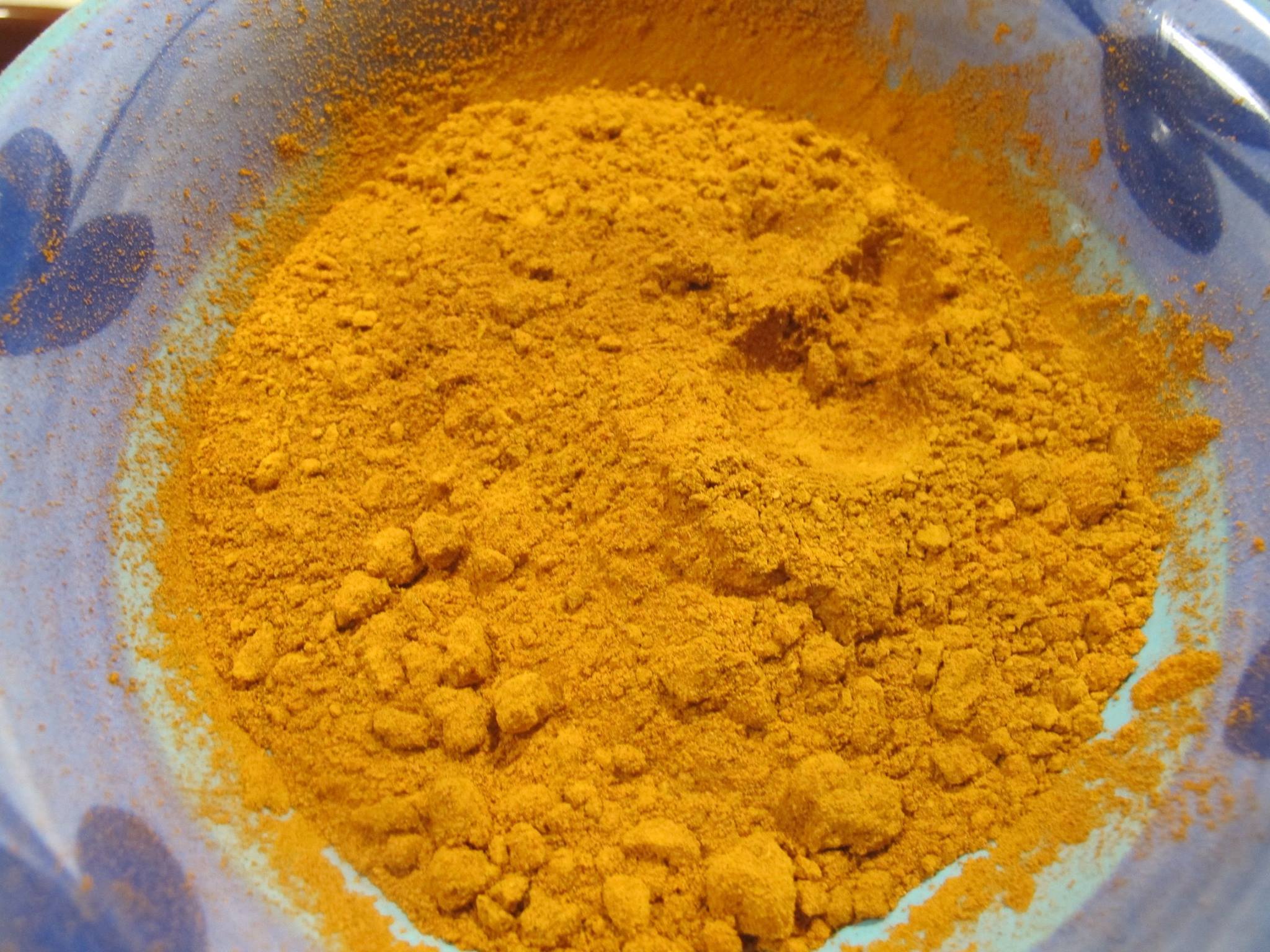
Some things will dry down on a sunny counter if turned frequently and I’ve even seen people dry in their car on their back window ledge (this is clever). Some herbs will dry if hung loosely or in a paper bag that’s frequently shook. You can produce some dried goods in an over set on low. I suppose in the best weather years (for our area), old fashioned drying could happen on a roof protected from insects and birds, however, mostly you are going to need some sort of powered drier like an electric one. Produce produced early to mid summer might have the best luck of being naturally dried in a green house or with solar power as we are most likely to have a long hot spell this time of year.
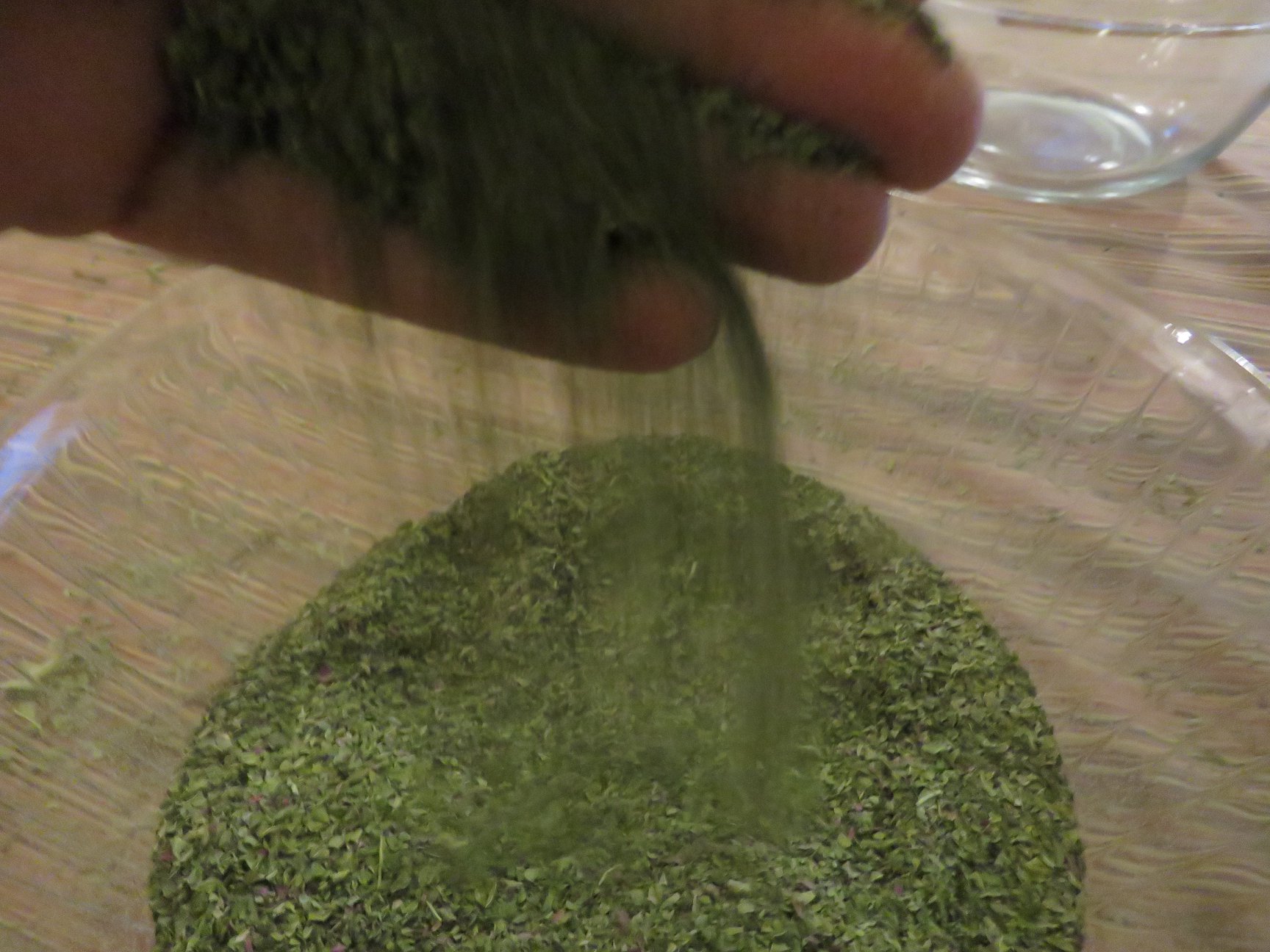
Freezing
Mostly I froze fruits like strawberries, currants, gooseberries, raspberries, plums, cherries, rhubarb and apple slices. I also froze peppers, tomato (though mostly we canned and dried these) cut pumpkin, shredded cabbage and shelly beans, which are immature but plump beans.
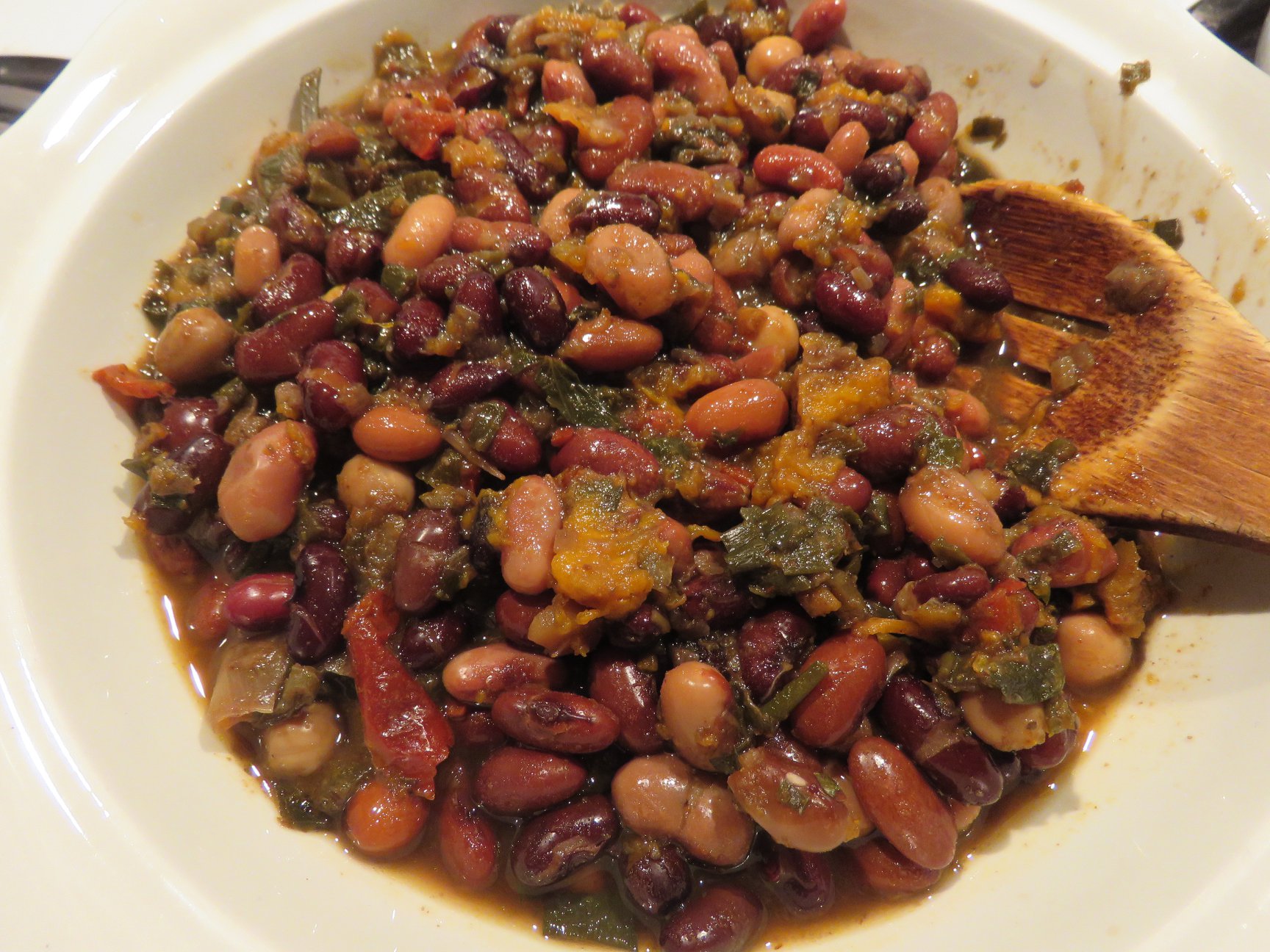
So you can see that if you have the energy and the space, you can grow a year’s worth of produce for your family. It’s a lot of work but very gratifying! See your ‘foodshed’ as expanding beyond just your garden and look into foraging and community harvesting to really stock your pantry.